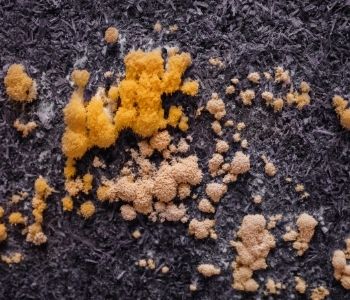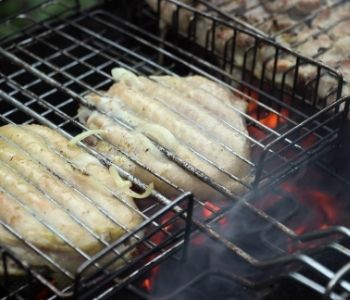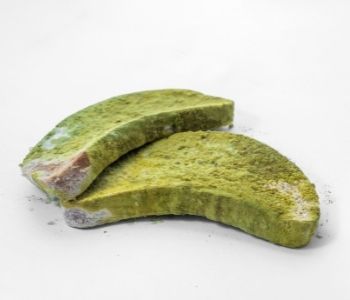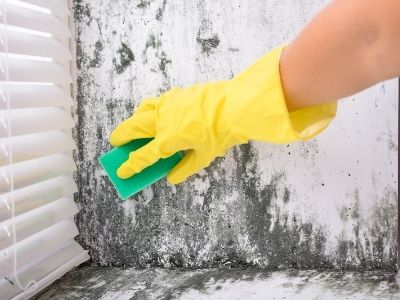Mold is one of those problems we like to pretend doesn’t exist. It is never a good sign and usually indicates moisture problems in the home or plumbing issues. The sooner we remove the mold the better. So, is it true that fire and heat will kill mold?

Fire and heat are both capable of drying out the mold and slowing its spread. However, to permanently eradicate mold you will need to do more than just expose it to heat or flames.
As this is quite a complicated issue with different factors at play, there is a lot we need to break down and understand in more detail. So, let’s consider the following to see what the best approaches are for dealing with different types of mold.
- Will fire kill mold on a grill or other cooking appliance?
- Will heat kill mold in a damp room?
- Will heat or fire kill mold on food?
- The problem of moisture and damp conditions
- How to get rid of mold once it is dormant.
Table of Contents
Will fire kill mold?
The first question here relates to the effect of fire on mold. The answer here does depend on the situation.
If you have a structural fire where the mold burns, but so does the wall it is on, the death of the mold is more of a by-product of a bigger situation.
Killing mold in a building with fire only works if you are deliberating burning the structure to the ground, removing all the remains, and starting from scratch.
In fact, fire may be the best solution for dealing with a condemned building that is a biohazard with excessive mold and other issues.
What does fire do to mold on a grill?
On a smaller scale, some claim to kill the mold that forms on their grill simply by lighting the grill and burning the mold. Some people will swear by this as a bit of a life hack.
They put their cooking devices away for winter, get them back out for the summer, and find that moisture got in and left mold on old grease on the grill or on the lid.
There are benefits to this approach of lighting a fire as the extreme heat and effect of the flames will alter the composition of the mold and stop it from being able to spread any further.

However, this doesn’t mean that you have killed the mold or removed it entirely. You could end up with spots of mold on your grill or the lid of the appliance that are dormant and could regenerate under the right conditions.
There is also the fact that this is a quick shortcut that doesn’t amount to actually cleaning the grill.
Will heat kill mold in your home?
Then there is the common issue of mold forming in damp areas of the home. You may have spots in outbuilding or basement areas that are prone to mold because of leaks from rainwater or other conditions.
Or, there could be a sudden mold issue due to floods or leaks from your plumbing. Water-soaked floors and walls can quickly develop mold if they aren’t dealt with fast enough.
The logical option for a lot of homeowners is to use heat to dry out the area and kill the mold. You might decide to set up a portable heater next to a problem area, target a bad spot with a hairdryer, or just turn up the thermostat to raise the room temperature.
As with the fire method, there is a good chance that the heat will deactivate the mold and stop it from spreading.
But, you aren’t necessarily going to kill the mold and get rid of it with heat alone. Also, there are additional risks of applying concentrated heat to materials as they dry out. Wood, for example, could warp or discolor.
Will fire or heat kill mold on food?
Another common question regarding heat, fire, and mold is what to do about mold on food. We’ve all been there where we get to the end of a loaf of bread and find a tiny bit of white mold on the crust.
Do we cut it off, kill it in the toaster, or throw the slice away?

While some people will say that you can toast bread with a bit of mold, this isn’t a good idea. The principle with the heat is the same.
You aren’t removing the mold and it may not be completely dead. Cut your losses and get a new loaf. The same is true for any other food past its best that you want to flame-grill. It isn’t worth the risk of food poisoning.
Can you use moldy wood in a fire?
This is another important consideration if you have a fireplace or firepit and like to collect wood to burn. That wood does run the risk of developing mold when it gets damp in unsuitable conditions.
So what should you do if you notice moldy logs in the pile?
There are warnings against using these logs because of a risk of mold spores entering the atmosphere as the log burns. Particles from combustible materials rise up through smoke during an incomplete burn and you don’t want anything dangerous mixing with the soot and ash.
Place it safe and stick with dry logs.
Why is it so difficult to get rid of mold?
Mold develops in moist conditions. When you remove the moisture you inhibit the mold’s chances of survival and ability to spread further.
That is why heat is so helpful, to a point. You are drying out the area and the mold infestation to remove that moisture. But, the subsequent issue is that you have a dormant patch of mold that could easily come back to life and continue to spread with more moisture.
So, you could apply heat to a damp area in a flooded room and dry out the moldy patch. But, water can creep back into this dry patch if there is still a moisture problem in the house.
That is why it is so difficult to eliminate mold when there are deeper issues with flooded areas, leaks, or condensation problems on windows.
Once that problem is dealt with you have a better chance of killing and removing mold more effectively. With that said, you can’t just live with growing mold while waiting for workmen to finish fixing your home.
Nor, should you have to put up with mildew on your window because you always get condensation in the winter.
What are the better ways to deal with mold instead of relying on fire and heat?
The first thing that you need to do in a home is to remove the moisture as effectively and quickly as you can Dehumidifiers and damp traps are perfect for drawing moisture out of the environment, leading to drier walls and wooden furniture that could easily become moldy.
Once the place has dried out you can clean the area with mold removal sprays and bleach-based products. It is still a good idea to use these even when the area isn’t completely dry to control the spread.
Cleaning is also essential when dealing with cooking appliances so it is good as new for the new season.

There are also some great preventative measures here, such as cleaning more thoroughly before storage and buying a waterproof cover. Preventative action is less of an option with water damage at home.
But, it helps to check on any signs of leaks or dampness before they get worse.
However, fire and heat certainly have their place in mold removal in certain situations. If you have a serious flood and are yet to source a dehumidifier then raising the room temperature can’t hurt.
This isn’t as problematic as targeting areas with high heat and could slow the progress of the damp and mold.
Also, some people recommend burning grills before cleaning, even if it won’t kill the mold, because it reduces the risk of spores flying around when you use a pressure washer or any scraping tools on the grease.
To summarize, there is a place for heat and fire in some situations to limit the spread of mold. But, you need a more comprehensive plan of eliminating moisture and cleaning areas to fully eradicate it.
If a situation seems out of control and you worry about handling it, get professional help.